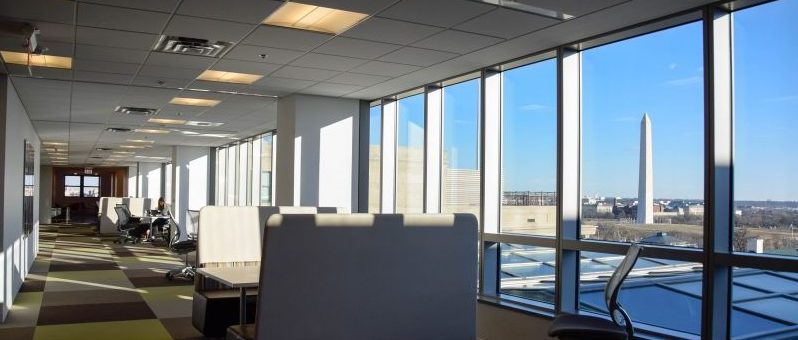If you haven’t heard by now, the federal government has prioritized modernizing IT infrastructures. Codified in the Modernizing Government Technology (MGT) Act, the Technology Modernization Fund (TMF) offers agencies parcels of money – that over time have to be repaid – to rebuild their cyber and technology systems.
Three agencies have already gotten in on the funds. The Technology Modernization Board awarded the Energy Department (DOE) $15 million for its enterprise cloud migration acceleration effort, and as part of a farmers.gov website rebuild the Agriculture Department (USDA) took home $10 million. The Housing and Urban Development Department (HUD) received the largest award – $20 million for moving legacy mainframe systems to the cloud.
The General Services Administration (GSA), the agency that oversees the TMF, isn’t just doling out big checks, however. Dozens of proposals have been turned down too – with most in the range of $2 million to $40 million – but that doesn’t mean the next one will be. After all, $55 million remains in the 2018 budget.
Friday, at GSA’s “Future Services Now” conference, Elizabeth Cain, the Acting Executive Director of GSA’s TMF Program Management Office (PMO), spoke on resources that the board offered and what leads to a successful proposal. Here’s how to pitch a strong bid.
Prepare a Strong Payback Plan
The money isn’t a handout. Instead, the kickstarter package comes as a loan, but repayment and disbursement options are flexible. Before coming in heavy-handed with a pitch, know what your resources are and how you plan to recoup the money.
For example, the board reasoned that HUD would save $8 million a year by transitioning code and legacy technology to the cloud. As a cost-saving solution in the long run, HUD’s proposal clearly was attractive to the board.
It sounds simple, but payback uncertainty is the most common pitfall for agencies, Cain said. The money is attached to certain steps in the process, each with an identifiable gain.
“For example, let’s say that they have a good technical solution, good executive support but they don’t have a strong payback plan,” Cain said. “That’s sometimes a reason why the board might not select that project to move forward to the next round.”
When applying, keep in mind that the project should help you deliver services and save on costs. The board will work with you on the financial side, but before diving too far in, remember that the fund allows you to undertake projects that your agency might not have the immediate resources for. To keep the program going, though, you have to replenish the well.
Have a Plan Ready for Technical Solutions
Anybody can have a problem. Pitch your proposal with a foolproof solution.
At the end of the day, TMF awards not only carry money but prestige. The board likes knowing that your agency has been thinking about step-by-step fixes, from the IT level all the way to executive sign-off and assurance. You don’t have to have everything ironed out when submitting the initial proposal – a two- or three-page templated overview – but having a proof of concept, pilot or depth of research goes a long way.
TMF money doesn’t offer millions of dollars for Band-Aids. If you just want to patch a leak or update a legacy system, think elsewhere. The operative word is “solution.”
Focus on Shared Solutions
No agencies have pitched a joint proposal yet, but Cain said the board would love to hear one. As shared services can be adapted to agencies’ needs, transferrable ideas merit special consideration.
Ideally, Cain said, the service provider would make the pitch in order to smooth over any of the differences that the two agencies might have. That model would not only mitigate the stress of acquisition, but it would also help the board link other agencies up for a larger effort.
Incorporate Emerging Technologies
Flexible money is on the table, so don’t be afraid to think big. Remember that the MGT Act focused on more than progressing government technology. For example, innovating new ways to help citizens is going to catch the eye.
It’s no surprise that two of three award-winners have been in the news for other modernization efforts. USDA and HUD are the only two Centers of Excellence (CoE) sites, and while the TMF loans are not related to the CoE designation, both departments have shown an agenda of modernization.
“Once agencies have one project where they figure out where this advance and then repayment structure would be a real benefit to them, they think about other projects that would have a similar model,” Cain said. “Or they tell their friends at the lunchroom or at happy hour about what they’re thinking about and then that friend has a project idea.”
Seek Help
The TMF is still in its first year, so don’t be afraid to ask questions. Although a successful project will have interdepartmental support, the idea can originate from anywhere.
If you have questions, go to the PMO. It helps guide teams through the nitty gritty – from finances to honing the finer details of acquisition.
“We’re working with agencies to figure out what makes a good TMF project, so it’s totally fine with us that we’re figuring that out along the way,” Cain said.





Leave a Reply
You must be logged in to post a comment.